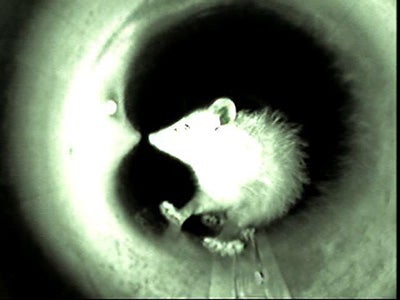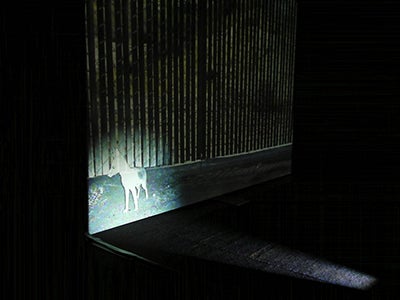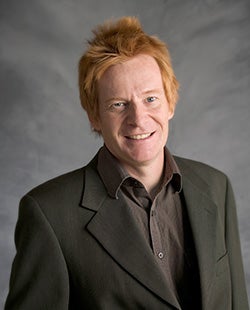Colin Ives, associate professor of digital arts, has been awarded a 2015 Faculty Research Award from the UO Office of the Vice President for Research and Innovation for his creative work, research, and contribution to the field of digital arts. The peer-reviewed award, which honors past excellence and funds future projects, is given to a select group of professors working at the top of their fields.

Above: From the series "Nocturne" by Colin Ives.
Ives' diverse work includes media installation, kinetic video sculpture, sculptural objects, and interactive screen-based work. Exploring how digital tools are changing our capabilities and our worldview, his work juxtaposes our technology-driven culture's negative impact on the environment with the relationship we have to nature via technology. His projects address ecological issues not only in regard to technologically driven questions but also in regard to broader questions about our sense of our place in the natural world.
The creative work project funded by Ives' Faculty Research Award is called The Sinuous Index. In a statement about the project, Ives notes that “most of our major rivers are controlled and largely fixed in their paths. Harnessed for power and managed for flood control, the natural dynamic meandering path of our rivers is lost.” With every major tributary of the Willamette River blocked by dams and most without fish ladders, he says, “in terms of the vital life of the river something essential has been lost.”

Above: From the series "Nocturne" by Colin Ives.
The Sinuous Index is an attempt, “on a small scale, to reassert this vitality,” he states. “In the study of rivers the sinuosity index is used in quantifying how much a river meanders. I’ve titled this project in reference to this calculation and for the way in which the work serves as an index for the complex issues of the current state of the Willamette River.”
To date Ives has designed and built “a near-scale prototype of a room-sized robotic polar plotter. The motors of the plotter work in tandem “to allow a moving frame of video to appear to be accurately flowing in a programed meander on a circular path around the room, ”I am currently using a recording from Google Earth in place of aerial video of the river,” Ives says. “The final goal is to use LIDAR data that reveals movements of the river prior to the 1850s, so that each pass around the room will remap, into a circular arrangement, the historical changing meanders of the once-free river’s passage.”
Faculty Research Awards provide funds for scholarship, creative projects, and quantitative or qualitative research.
Follow Ives' progress on The Sinuous Index on the project's page.
Learn more about Colin Ives and his work on his faculty page.

Above: An image of Ives’ piece "Salmon Run."

Above: Colin Ives
